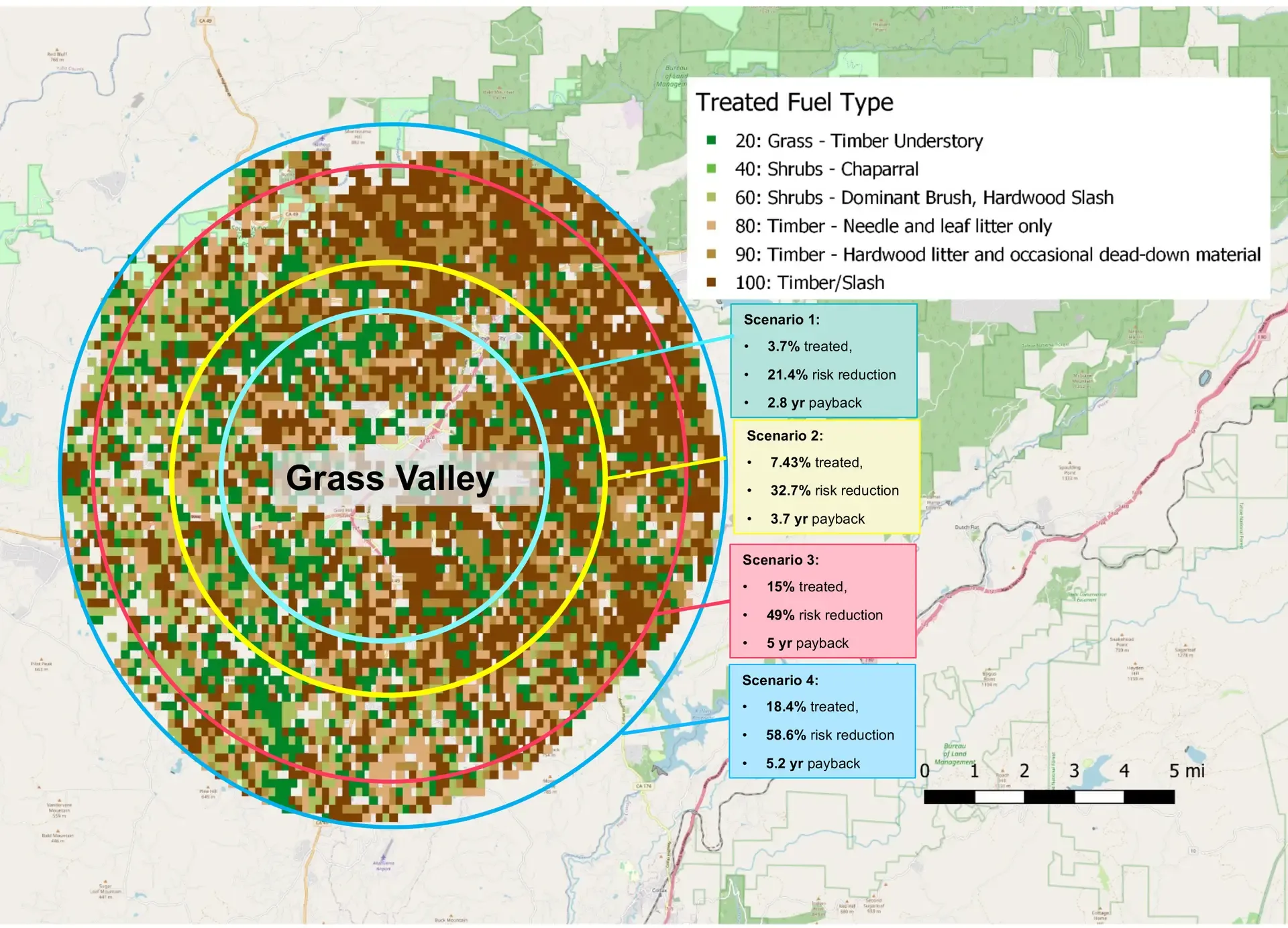What We Can Save by Reducing the Wildfire Threat Across Public and Private Land in the West

The wildfire crisis in the West is one of the biggest environmental challenges of our time. While fire is a natural and necessary occurrence in our forests, the West has become a different story. Due to decades of fire suppression that has altered our forests' natural structure, and the spiraling effects of climate change, we are experiencing catastrophic fires with unprecedented frequency and severity. This is putting a strain on infrastructure, homes, communities, air quality, clean water and more.
While most see the wildfire challenge as a public lands issue, it's really an all-lands issue. Land in the West is a checkerboard of federal, state, tribal, private, and individual entities mixed together, and threats like wildfire do not respect ownership boundaries. More specifically, family forest owners own 1 out of every 3 acres of forest at high risk from fire in the West.
As wildfires continue to grow in size and severity, we must meet the scale of the challenge with an equally sizable solution - where we address the health of our forests and restore natural resiliency to wildfire across all forests and ownerships in the region. Fortunately, federal legislators made an investment in this paradigm shift as evidenced by the Forest Service’s new 10-year strategy to the wildfire crisis.
Yet the funding levels to accomplish this strategy remain insufficient. Despite the historic investment via the 2021 Infrastructure Act, estimated costs of total fuel reduction needs across both public and private lands in the West are well into the tens of billions of dollars (CRS, 2020).
Policymakers, corporations and insurers have struggled to rationalize this scale of funding due to the vast unpredictability of the costs of wildfire destruction and an all-too-often mindset of ‘it hasn’t happened to us yet.’
To substantiate the financial benefits of fuels reduction treatments, better justify the need for more funding, and ignite the scale of investment needed, the American Forest Foundation partnered with Risk Management Solutions to develop a replicable approach to quantify avoided losses from wildfire to residential, commercial, and industrial infrastructure.
The AFF and RMS teams used sophisticated probabilistic wildfire risk modeling that considers the widest range of factors – including climate, fire triggers, vegetation type, gradient, and how they all contribute to fire spread. Using a sample community - Grass Valley, California - the team modeled different treatment scenarios across both public and private ownerships with treatable fuel types, to determine a financial estimate of avoided loss from specific forest treatment regimes.

Consolidated illustration of four scenario treatments exploring change in relative costs/benefits based on percentage of treatment area, all else is constant.
Results indicate that under certain biophysical, logistical, and economic considerations, forest fuels mitigation treatments could result in 21-59% avoided average annual loss to infrastructure with scales of treatment between 3.7% (14,871 acres) and 18.4% (74,088 acres) of total landscape area. Under conservative treatment and maintenance assumptions, the estimated net present value of fuel modification can range from $13 to $17 million dollars over a 15-year period.
This means that investing in fuels mitigation treatment, rather than waiting for forest restoration treatments after a fire has occurred, could save millions of dollars for business and government leaders.
View the Full Analysis.
This first-of-its-kind methodology and analysis puts a realistic benefit on fuels mitigation, arming leaders with a strong baseline to justify increased investment. We encourage policymakers and other leaders to consider how this tool can be used to advance wildfire risk modeling. Together we can better understand the effectiveness, financial viability, and impact that a comprehensive fuels mitigation strategy can have on forest health and communities, increasing the scale and pace of forest restoration at this critical time.
Learn more about the American Forest Foundation’s work on the ground with landowners in California.